Titanic
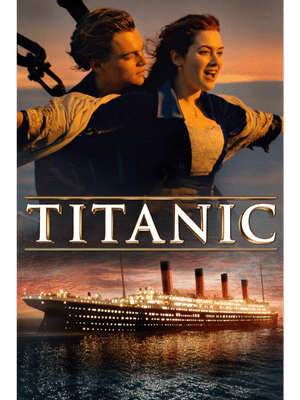
PG-13, Romance/Drama, 1997, 3h 14m
Table of Contents
What Is Titanic About?
A poor artist and a rich woman fall in love on the doomed maiden voyage of the RMS Titanic.
Why You Should Watch Titanic
Released in 1997, James Cameron’s “Titanic” has solidified its place as a timeless cinematic masterpiece. Seamlessly blending historical tragedy, breathtaking romance, and groundbreaking visual effects, this epic film takes viewers on an emotional rollercoaster that lingers long after the credits roll.
Set against the backdrop of the ill-fated RMS Titanic’s maiden voyage, the film weaves together a poignant love story between Rose (Kate Winslet), a spirited young aristocrat, and Jack (Leonardo DiCaprio), a free-spirited artist from a lower social class. Their chance encounter on the ship sparks an unforgettable romance that transcends societal barriers, captivating audiences with its sincerity and intensity.
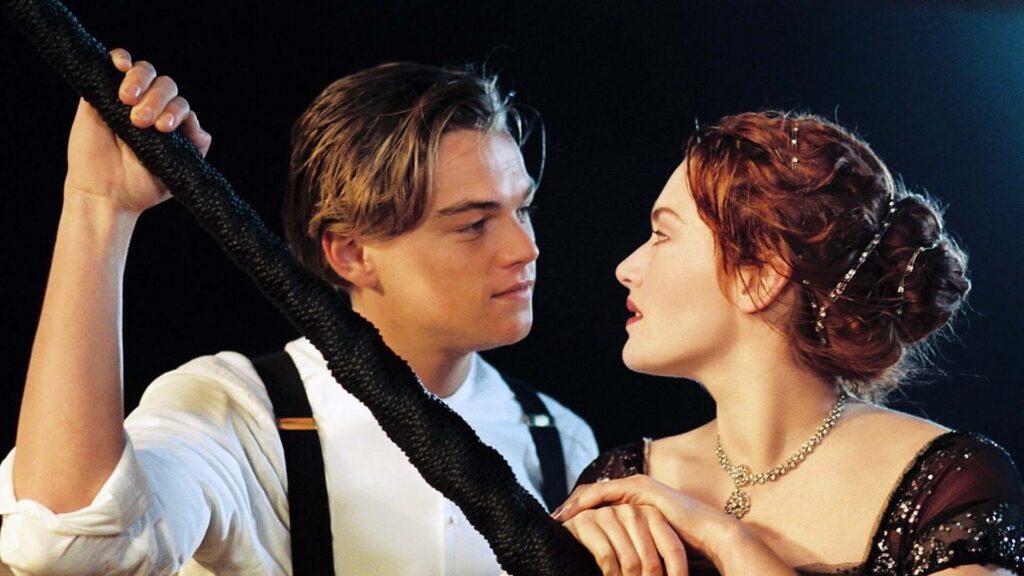
One of the film’s greatest strengths lies in its meticulous attention to detail and historical accuracy. From the awe-inspiring recreation of the Titanic’s grandeur to the immersive portrayal of early 20th-century society, every frame transports viewers back in time, offering a vivid glimpse into a bygone era. The production design, costumes, and set pieces flawlessly capture the opulence and elegance of the period, adding to the film’s overall authenticity.
The performances in “Titanic” are nothing short of remarkable. Kate Winslet delivers a tour de force performance as Rose, infusing her character with a delicate blend of vulnerability, strength, and rebellion. Leonardo DiCaprio shines as Jack, exuding charm and charisma that make him an instantly endearing presence on screen. The chemistry between Winslet and DiCaprio is palpable, creating a captivating on-screen romance that resonates with audiences of all ages.
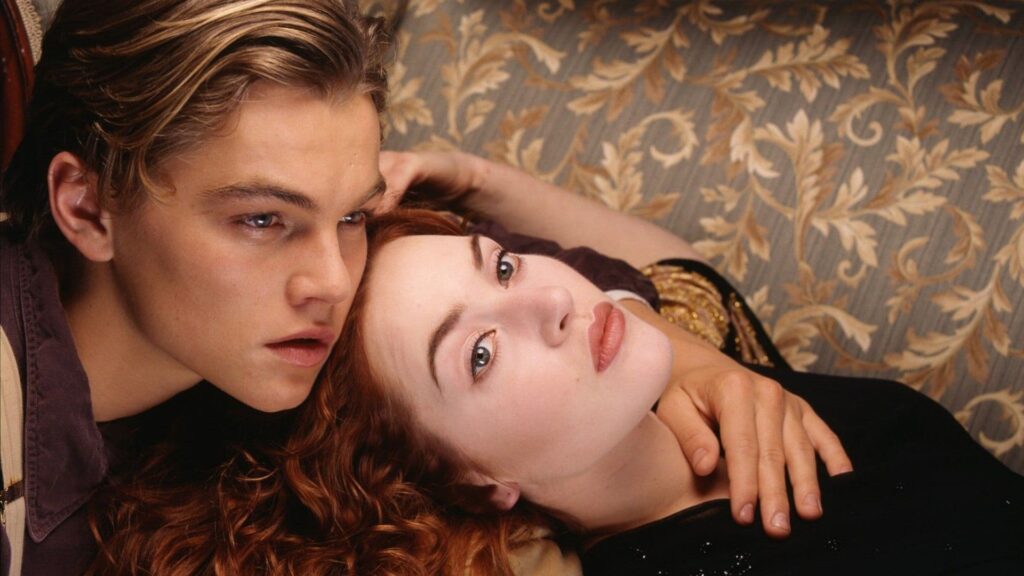
James Cameron’s visionary direction and storytelling prowess are evident throughout the film. The screenplay beautifully balances the personal narrative of Rose and Jack with the larger tragedy unfolding around them. Cameron’s ability to seamlessly interweave fictional characters with historical events is a testament to his storytelling genius. The suspense and tension build gradually, culminating in a heart-wrenching climax that leaves viewers emotionally shattered.
Beyond its compelling love story, Titanic also serves as a powerful reminder of the human capacity for both courage and compassion. The film explores themes of class, social hierarchy, and the fragility of life, prompting viewers to reflect on their own values and priorities. The ensemble cast, featuring exceptional performances by actors such as Billy Zane, Kathy Bates, and Frances Fisher, brings depth and complexity to their respective characters, further enhancing the film’s narrative richness.
Undoubtedly, one of the film’s most enduring legacies lies in its groundbreaking visual effects. The seamless integration of CGI technology with practical sets and models pushes the boundaries of what was previously thought possible in filmmaking. The iconic scenes of the ship’s grandeur, its catastrophic sinking, and the haunting underwater shots are a testament to the extraordinary skill and innovation of the visual effects team.
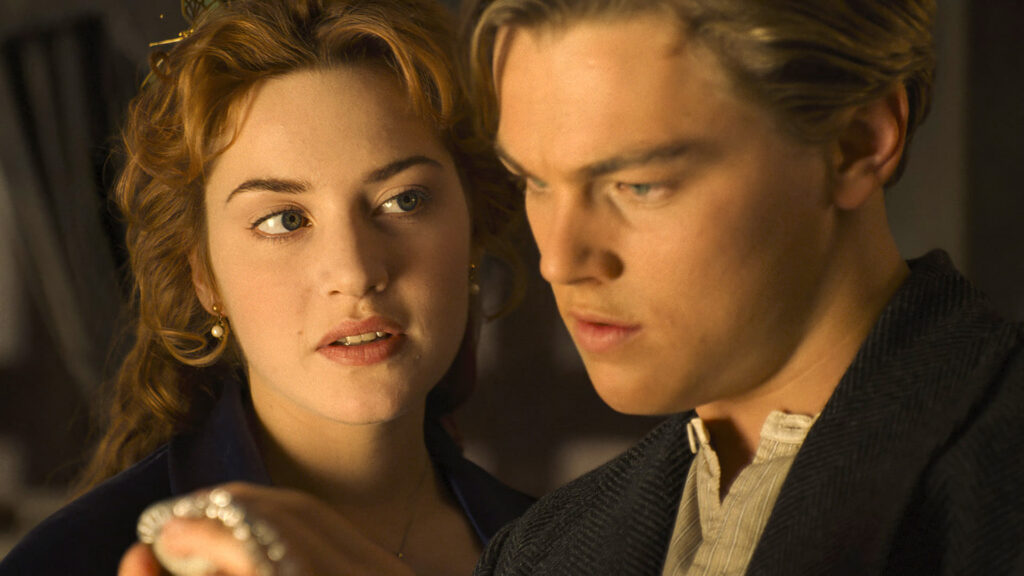
In conclusion, Titanic is an epic masterpiece that continues to captivate hearts and souls more than two decades after its release. It combines historical tragedy, breathtaking romance, and groundbreaking visual effects to create an unforgettable cinematic experience. With its meticulous attention to detail, stellar performances, and thought-provoking themes, the film transcends its genre and stands as a timeless testament to the power of love and the indomitable human spirit.
The Theme of Titanic
Titanic is a film that masterfully explores a variety of themes. Central to the narrative is the theme of love and sacrifice. Jack and Rose’s relationship is a testament to love’s transcendence over societal norms and constraints. Their connection blossoms despite the stark differences in their social status, depicting the universality and unifying power of love.
Class division is another prominent theme. The Titanic itself symbolizes the class disparities of the era, with the luxurious accommodations for the wealthy passengers contrasting sharply with the cramped, bare conditions for those in steerage. Through this, Cameron critiques the rigid social hierarchy and the unjust consequences it often yields.
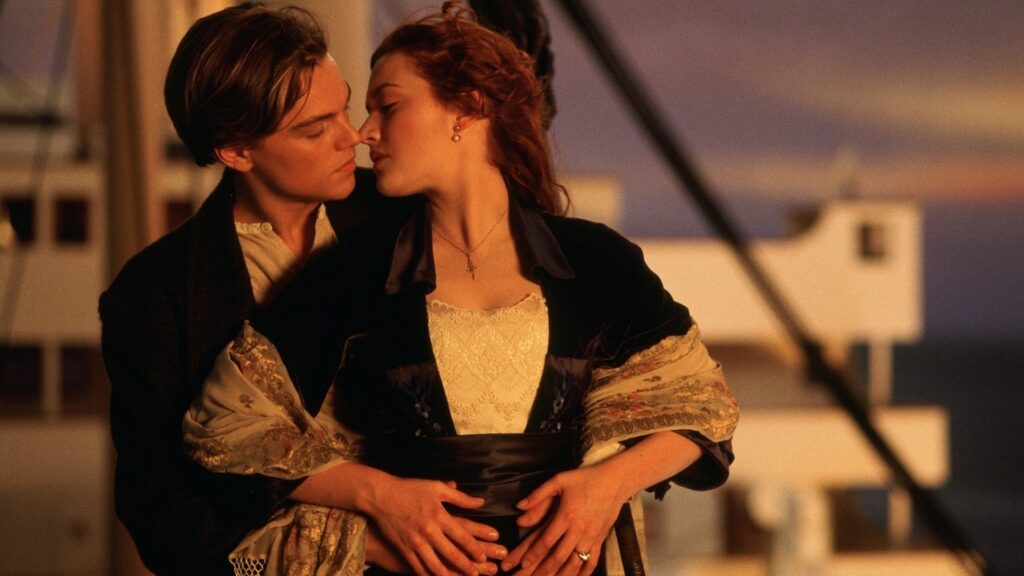
The film also contemplates the inevitability of fate and the ephemeral nature of life. The sinking of the Titanic, a ship proclaimed to be ‘unsinkable’, serves as a metaphor for the human arrogance in believing we can control our destiny. The tragic ending underlines the fragility of life and the indiscriminate force of fate.
Finally, Titanic explores the theme of personal freedom. Rose’s character arc depicts her journey from a life of societal-imposed expectations to embracing personal liberty, symbolized by her relationship with Jack. Her eventual survival and transformation into an independent woman highlight the human capacity for resilience and self-determination.
The Cinematography of Titanic
The cinematography of James Cameron’s Titanic was handled by Russell Carpenter, who used the camera to create a deep and intimate narrative. The film was shot in a Super 35 format, providing a wider aspect ratio that was used to its full effect to depict the grandeur of the Titanic and the vastness of the sea.
Carpenter employed various lighting techniques to evoke mood and time. The ship’s interiors were filled with warm and golden light to accentuate the opulence of the Titanic, while the exteriors were bathed in the cool blues and whites of the North Atlantic, establishing a stark contrast between the luxurious ship and the harshness of nature.
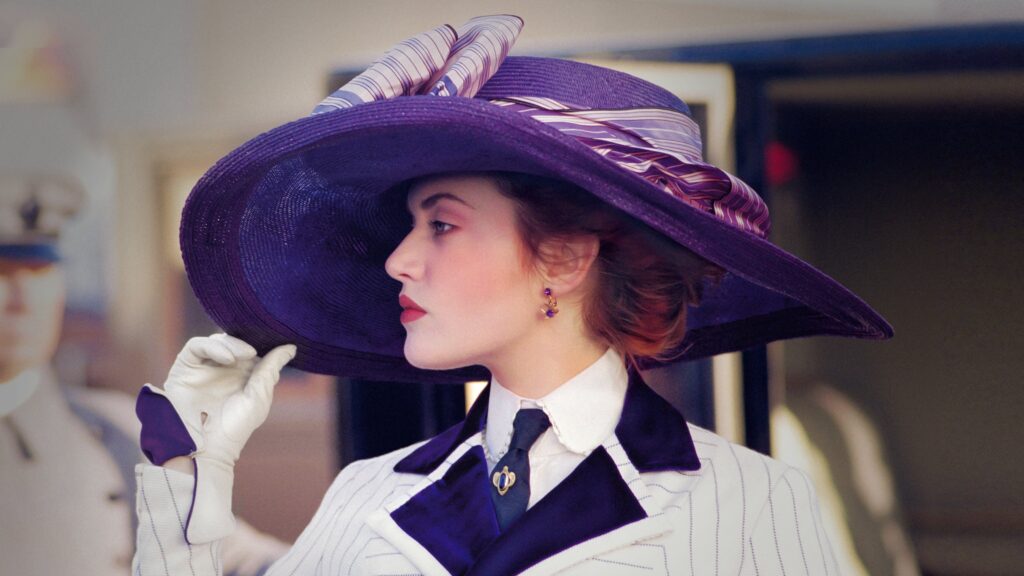
Cinematography also played a significant role in the storytelling, particularly in the creation of iconic scenes. The wide shots of the ship communicated its size and grandeur, while close-ups offered a window into the characters’ emotions. One of the most memorable shots is the “I’m the king of the world!” scene, where Carpenter used a crane shot to emphasize Jack’s feeling of freedom and excitement.
The underwater shots of the Titanic wreckage were hauntingly beautiful, with the use of blue lighting giving it an eerie quality. These scenes were combined with seamless digital effects, enhancing the narrative and emotional depth.
The Soundtrack of Titanic
The soundtrack of Titanic, composed by James Horner, is as iconic as the film itself. The score is lush, romantic, and melancholic, reflecting the epic and tragic narrative of the movie.
The soundtrack blends orchestral and choral music, creating a rich tapestry of sound that underscores the emotion and drama of the scenes. One of the key elements of the score is the use of Celtic instruments, such as the uilleann pipes and tin whistle, which give the music an ethereal quality, providing a cultural connection to Jack’s character and the ship’s departure from Ireland.
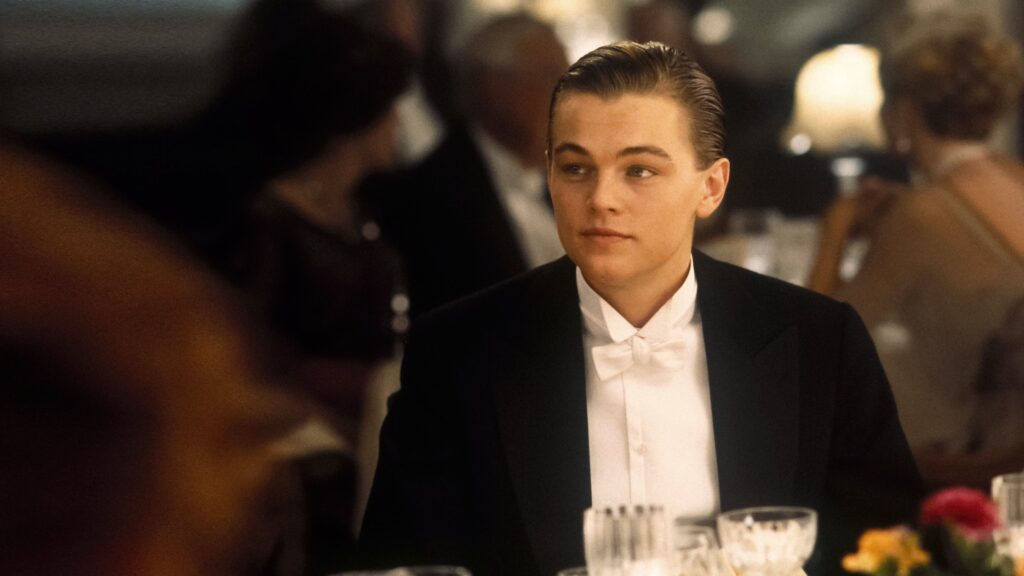
Perhaps the most famous piece from the soundtrack is “My Heart Will Go On,” performed by Céline Dion. This hauntingly beautiful ballad serves as the film’s love theme. Its melody is woven throughout the score, linking it to pivotal moments in Jack and Rose’s relationship. The song has become synonymous with the film, its poignant lyrics reflecting the enduring love and loss at the heart of the story.
Additionally, the diegetic music – the music performed within the world of the film, such as the lively tunes played by the ship’s band or the gentle waltzes during the first-class dinners – adds authenticity to the period setting.
Overall, Horner’s soundtrack adds depth and dimension to the narrative, becoming an integral part of the film’s emotional impact. The score won an Academy Award for Best Original Dramatic Score, and “My Heart Will Go On” won for Best Original Song. You can listen to the original motion picture soundtrack below.
The Cast of Titanic
- Leonardo DiCaprio as Jack Dawson – A poor but free-spirited artist from Wisconsin who wins his ticket aboard the Titanic in a poker game.
- Kate Winslet as Rose DeWitt Bukater – A first-class passenger aboard the Titanic who is originally from Philadelphia.
- Billy Zane as Caledon “Cal” Hockley – Rose’s wealthy, controlling, and manipulative fiancé. He is determined to marry Rose for her social status and wealth, but he is cruel and unsympathetic.
- Frances Fisher as Ruth DeWitt Bukater – Rose’s mother, who is deeply concerned with maintaining her family’s social status and wealth.
- Gloria Stuart as Old Rose -Elderly Rose, who shares the story of the Titanic with treasure hunter Brock Lovett and his team.
- Bill Paxton as Brock Lovett – A treasure hunter searching for the “Heart of the Ocean” necklace in the Titanic wreck.
- David Warner as Spicer Lovejoy – Cal’s valet and bodyguard. He’s loyal to Cal and aids him in his attempts to control Rose and separate her from Jack.
- Victor Garber as Thomas Andrews – The ship’s builder and a friend of Rose’s.
- Jonathan Hyde as J. Bruce Ismay – The managing director of the White Star Line, the company that built the Titanic.
- Bernard Hill as Captain Edward John Smith – The experienced captain of the Titanic. He goes down with his ship after underestimating the danger they were in.
- Kathy Bates as Molly Brown – Also known as “The Unsinkable Molly Brown,” is a new-money passenger aboard the ship.
- Danny Nucci as Fabrizio De Rossi – Jack’s best friend and traveling companion.
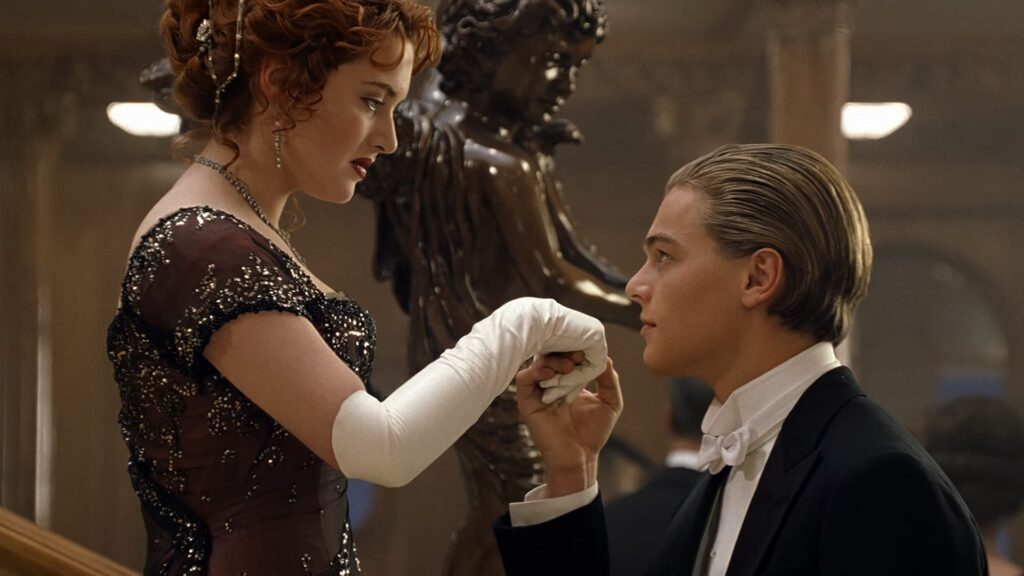
The Filmmakers of Titanic
- James Cameron: Director, Writer, Producer
- Jon Landau: Producer
- Rae Sanchini: Executive Producer
- Russell Carpenter: Cinematographer
- Conrad Buff, James Cameron, Richard A. Harris: Editors

Iceberg Lettuce Salad

Inspiration
The Titanic Collision

More About Titanic
The Titanic sank in the early hours of April 15, 1912, after hitting an iceberg just before midnight on April 14. Although it was indeed nighttime, it wasn’t necessarily pitch black.
The moon on that night was nearly new, meaning it would have provided little illumination. However, the stars would have been visible, and the clear atmosphere out at sea can make them seem brighter than they might appear in populated areas. But it wouldn’t have been enough to clearly see an iceberg in the distance.
Onboard the Titanic, there would have been artificial lighting. The ship was equipped with electrical lighting in passenger and crew areas, as well as deck lighting, which would have aided the evacuation process as lifeboats were being launched. However, as the ship lost power, these lights would have gone out, making conditions increasingly dark and chaotic.
Once the Titanic fully sank and people were left in lifeboats or in the water, the conditions would have been extremely dark. This would have made rescue efforts even more challenging, although the distress flares launched from the lifeboats did manage to attract the attention of the RMS Carpathia, which arrived several hours later to rescue the survivors.

